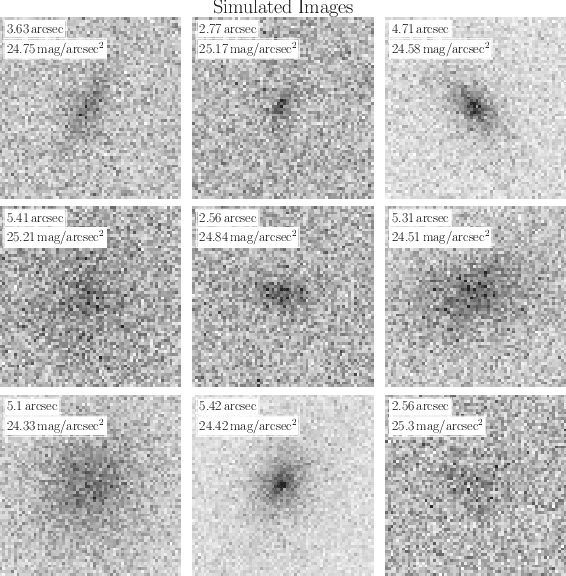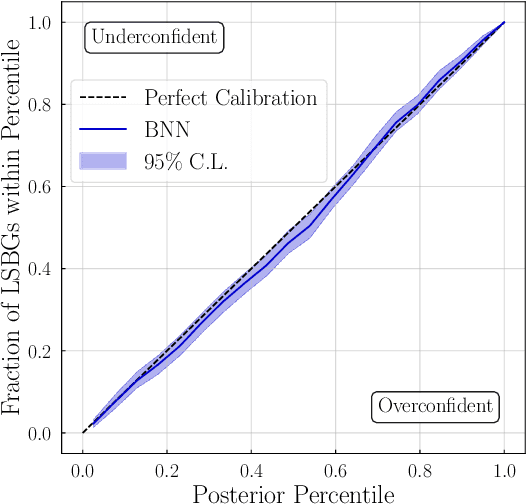Dimitrios Tanoglidis
University of Pennsylvania
AstroLLaVA: towards the unification of astronomical data and natural language
Apr 11, 2025Abstract:We present AstroLLaVA, a vision language model for astronomy that enables interaction with astronomical imagery through natural dialogue. By fine-tuning the LLaVA model on a diverse dataset of $\sim$30k images with captions and question-answer pairs sourced from NASA's `Astronomy Picture of the Day', the European Southern Observatory, and the NASA/ESA Hubble Space Telescope, we create a model capable of answering open-ended questions about astronomical concepts depicted visually. Our two-stage fine-tuning process adapts the model to both image captioning and visual question answering in the astronomy domain. We demonstrate AstroLLaVA's performance on an astronomical visual question answering benchmark and release the model weights, code, and training set to encourage further open source work in this space. Finally, we suggest a roadmap towards general astronomical data alignment with pre-trained language models, and provide an open space for collaboration towards this end for interested researchers.
A Survey on Hypothesis Generation for Scientific Discovery in the Era of Large Language Models
Apr 07, 2025Abstract:Hypothesis generation is a fundamental step in scientific discovery, yet it is increasingly challenged by information overload and disciplinary fragmentation. Recent advances in Large Language Models (LLMs) have sparked growing interest in their potential to enhance and automate this process. This paper presents a comprehensive survey of hypothesis generation with LLMs by (i) reviewing existing methods, from simple prompting techniques to more complex frameworks, and proposing a taxonomy that categorizes these approaches; (ii) analyzing techniques for improving hypothesis quality, such as novelty boosting and structured reasoning; (iii) providing an overview of evaluation strategies; and (iv) discussing key challenges and future directions, including multimodal integration and human-AI collaboration. Our survey aims to serve as a reference for researchers exploring LLMs for hypothesis generation.
At First Sight: Zero-Shot Classification of Astronomical Images with Large Multimodal Models
Jun 24, 2024Abstract:Vision-Language multimodal Models (VLMs) offer the possibility for zero-shot classification in astronomy: i.e. classification via natural language prompts, with no training. We investigate two models, GPT-4o and LLaVA-NeXT, for zero-shot classification of low-surface brightness galaxies and artifacts, as well as morphological classification of galaxies. We show that with natural language prompts these models achieved significant accuracy (above 80 percent typically) without additional training/fine tuning. We discuss areas that require improvement, especially for LLaVA-NeXT, which is an open source model. Our findings aim to motivate the astronomical community to consider VLMs as a powerful tool for both research and pedagogy, with the prospect that future custom-built or fine-tuned models could perform better.
Transformers for scientific data: a pedagogical review for astronomers
Oct 19, 2023Abstract:The deep learning architecture associated with ChatGPT and related generative AI products is known as transformers. Initially applied to Natural Language Processing, transformers and the self-attention mechanism they exploit have gained widespread interest across the natural sciences. The goal of this pedagogical and informal review is to introduce transformers to scientists. The review includes the mathematics underlying the attention mechanism, a description of the original transformer architecture, and a section on applications to time series and imaging data in astronomy. We include a Frequently Asked Questions section for readers who are curious about generative AI or interested in getting started with transformers for their research problem.
Inferring Structural Parameters of Low-Surface-Brightness-Galaxies with Uncertainty Quantification using Bayesian Neural Networks
Jul 07, 2022



Abstract:Measuring the structural parameters (size, total brightness, light concentration, etc.) of galaxies is a significant first step towards a quantitative description of different galaxy populations. In this work, we demonstrate that a Bayesian Neural Network (BNN) can be used for the inference, with uncertainty quantification, of such morphological parameters from simulated low-surface-brightness galaxy images. Compared to traditional profile-fitting methods, we show that the uncertainties obtained using BNNs are comparable in magnitude, well-calibrated, and the point estimates of the parameters are closer to the true values. Our method is also significantly faster, which is very important with the advent of the era of large galaxy surveys and big data in astrophysics.
DeepShadows: Separating Low Surface Brightness Galaxies from Artifacts using Deep Learning
Nov 24, 2020



Abstract:Searches for low-surface-brightness galaxies (LSBGs) in galaxy surveys are plagued by the presence of a large number of artifacts (e.g., objects blended in the diffuse light from stars and galaxies, Galactic cirrus, star-forming regions in the arms of spiral galaxies, etc.) that have to be rejected through time consuming visual inspection. In future surveys, which are expected to collect hundreds of petabytes of data and detect billions of objects, such an approach will not be feasible. We investigate the use of convolutional neural networks (CNNs) for the problem of separating LSBGs from artifacts in survey images. We take advantage of the fact that, for the first time, we have available a large number of labeled LSBGs and artifacts from the Dark Energy Survey, that we use to train, validate, and test a CNN model. That model, which we call DeepShadows, achieves a test accuracy of $92.0 \%$, a significant improvement relative to feature-based machine learning models. We also study the ability to use transfer learning to adapt this model to classify objects from the deeper Hyper-Suprime-Cam survey, and we show that after the model is retrained on a very small sample from the new survey, it can reach an accuracy of $87.6\%$. These results demonstrate that CNNs offer a very promising path in the quest to study the low-surface-brightness universe.
 Add to Chrome
Add to Chrome Add to Firefox
Add to Firefox Add to Edge
Add to Edge